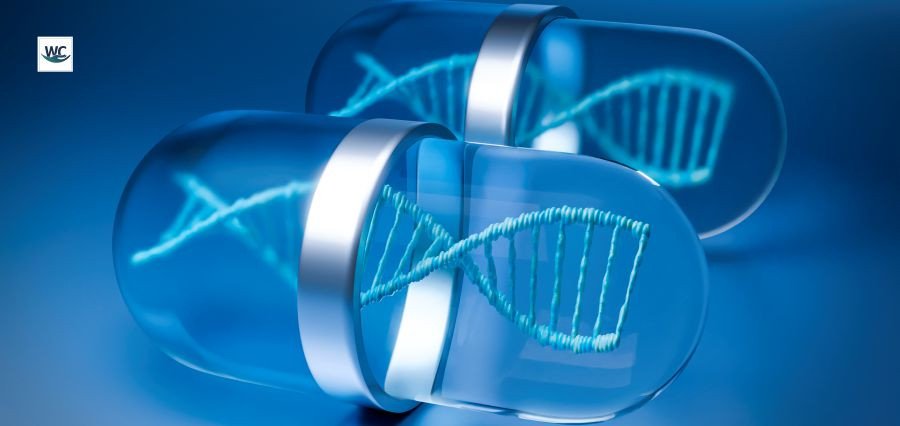- December 18, 2025

In a data-driven era,
our capacity to hold data is being pushed to the limits like never before. From
emails and photos to scientific studies and whole digital economies, how much
data the world produces is just going through the roof, projected to reach 180
zettabytes by 2025. Conventional storage media such as hard disks and servers,
are approaching their physical and environmental capacities. So, what lies
ahead?
What Is DNA Data
Storage?
In its essence, DNA
data storage refers to the practice of encoding and storing digital data in
man-made DNA molecules. Rather than relying on binary code (0s and 1s), this
technique represents information as sequences of the four DNA nucleotide bases:
adenine (A), cytosine (C), guanine (G), and thymine (T).
This is not science
fiction. Researchers have already stored everything from Shakespeare's sonnets
to high-def video in strands of artificial DNA. DNA is far denser and more
stable than conventional media — a gram can theoretically hold more than 215
petabytes of information, and it does not degrade for thousands of years.
Why DNA? The Power of
Molecular Memory
1. Unmatched Density
DNA is the most
effective storage medium ever known to humans. The entire world's data can be
stored in a shoebox of DNA.
2. Longevity:
Magnetic tapes or hard
drives degrade after a few years or decades, whereas DNA will keep data intact
for centuries under cool, dry storage conditions.
3. Sustainability:
Data centers use
enormous amounts of energy. DNA, however, does not need electricity to keep
information stored. This qualifies it as one of the greenest storage options
for the future.
How Does DNA Data
Storage Work?
The process consists of
four main steps:
1. Encoding:
Digital data is
translated from binary to DNA base sequences with the help of algorithms.
2. Synthesis:
These sequences are
chemically synthesized into actual DNA strands.
3. Storage:
Synthetic DNA is placed
in capsules or vials, needing no power or cooling.
4. Reading:
When desired, DNA
sequencing methods are applied to unravel the DNA and extract the initial
information.
Though existing
technologies render DNA data storage a moderately slow and expensive process,
synthetic biology, automation, and nanotechnology advances are quickly bridging
the space between theory and commercial use.
Real-World Applications
and Use Cases
DNA data storage is not
only a sci-fi dream — it's actively being developed by tech firms and research
organizations alike. Microsoft and the University of Washington have led the
charge, showing end-to-end automated systems that can write and read from DNA
data.
A few other interesting
use cases:
·
National library, museum, and cultural
institution archival storage
·
Long-term preservation of scientific
data (e.g., space exploration, climate records)
·
Medical records to be retained for the
duration of a patient's life and thereafter
·
Reliable backups of private government
or business data
Even NASA has
researched the possibilities of DNA data storage for use in deep space
missions, where the needs are durability and small size.
Problems and What's
Holding It Back
There are obstacles to
the widespread adoption of DNA as a storage medium before it happens:
·
High cost: DNA synthesis and sequencing
remain costly, though prices are declining fast.
·
Speed: Writing and reading data to and
from DNA is still much slower than the old way.
·
Standardization: There is no universal
system for encoding, storing, and retrieving DNA data yet.
But these are issues of
technology, and if history has taught us anything, it's that innovation picks
up speed when demand and investment converge.
DNA Data Storage: The
Future of Digital Preservation
As we delve further
into the digital era, no longer is the question simply one of how much data we
can keep, but of how effectively we can keep it. DNA data storage provides a
revolutionary redesign of what data storage can be — from silicon to biology,
from electricity to chemistry.
It provides a medium
that can be longer-lived than any hard drive and hold more than any cloud
server — all within the very code of life.
The marriage of
information science and biotech is revealing a new frontier. DNA data storage
is not merely a storage breakthrough — it's a recipe for digital immortality.
And as science improves and prices come down, it could soon become the
foundation of how humanity preserves its most precious digital memories.
Final Thought
Data characterizes our
generation, but perhaps DNA will characterize how we bring that data with us
into the future. The transition from mechanical to molecular storage has
already begun. And as we look toward the future of addressing the world's
storage crisis, one thing is certain: DNA data storage is the future of digital
preservation — and it's nearer than you think.